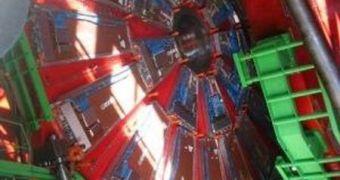After constructions that lasted more than a decade and billions of dollars invested in the world's largest scientific experiment, physicists who are now operating the Large Hadron Collider have just realized that they don't really know how the entire system works, in all of its details. As a result, they say, they may need more time to familiarize themselves with the machine, even if the June deadline, when the experiment is supposed to be brought back online, nears. Basically, many of those in the project tell that they've created a very complex organism, the result of more than 3,000 engineers working together.
“We will have to understand the detector first,” Ryszard Stroynowski, who is the chair and professor of physics at the Southern Methodist University (SMU), explained. The expert is also the US coordinator for the core instrument inside the large particle detector ATLAS, the Liquid Argon Calorimeter. At this point, and in the foreseeable future, ATLAS will remain the largest particle detector in the Large Hadron Collider, and also one of the largest such instruments in the world.
Originally scheduled to be brought back online this September, engineers at CERN believe that they could have the 27-kilometer circular tunnel back to operating strength within about a month. On April 30th, the last of the 53 super-sized magnets that were destroyed during last September's meltdown was lowered into the 100-meter shaft that connected the accelerator to the outside world. Now, all engineers have to do is connect all of them together, and calibrate all other fine components so that they work together seamlessly again.
The goal of the LHC is to accelerate two beams of high-energy sub-atomic particles in different directions, at an energy of about five teraelectron volts (TeV) per beam, and then to ram them head-on, inside a massive particle detector. They hope that, in the first fraction of a fraction of a second after the collision, the particle that allows energy to acquire mass, the Higgs Boson or the God Particle, will become visible to them. Countless applications would await such a discovery. However, serious results are not expected from the LHC earlier than 2011. Until then, it will run on lower intensities, PhysOrg reports.

 14 DAY TRIAL //
14 DAY TRIAL //